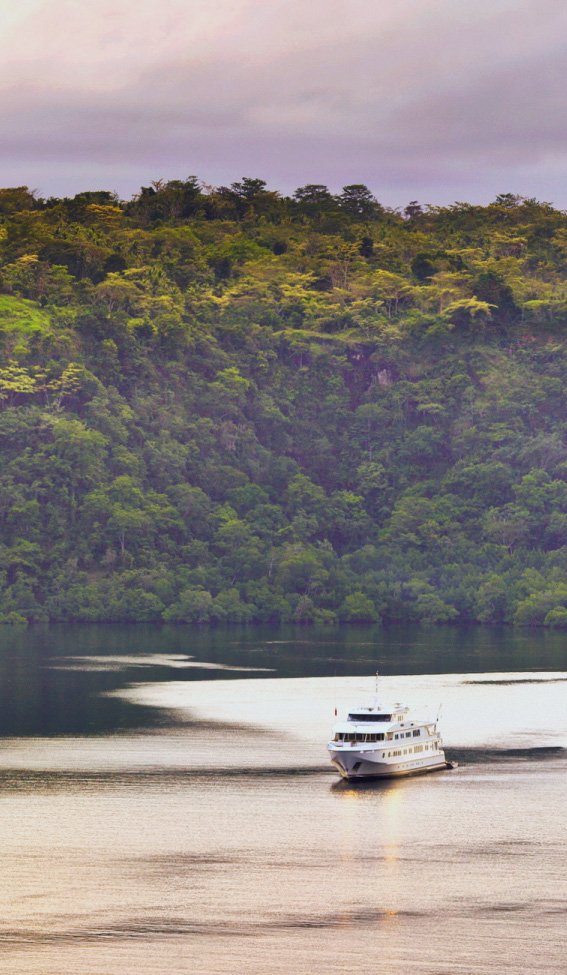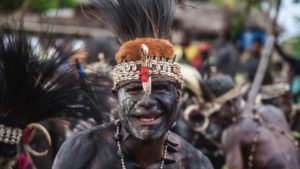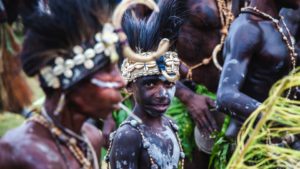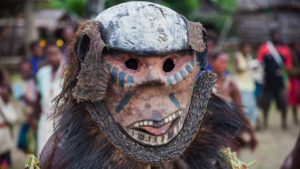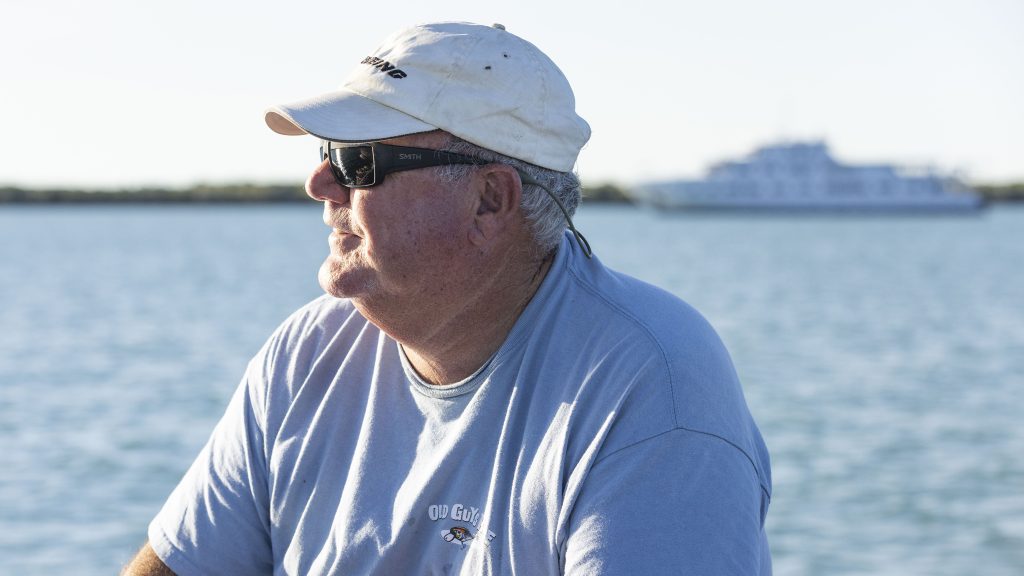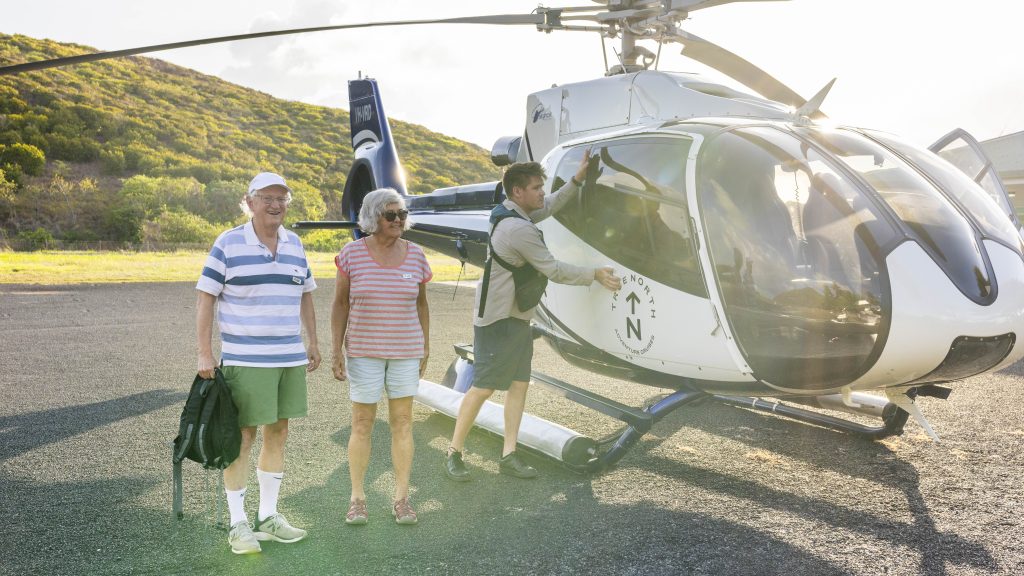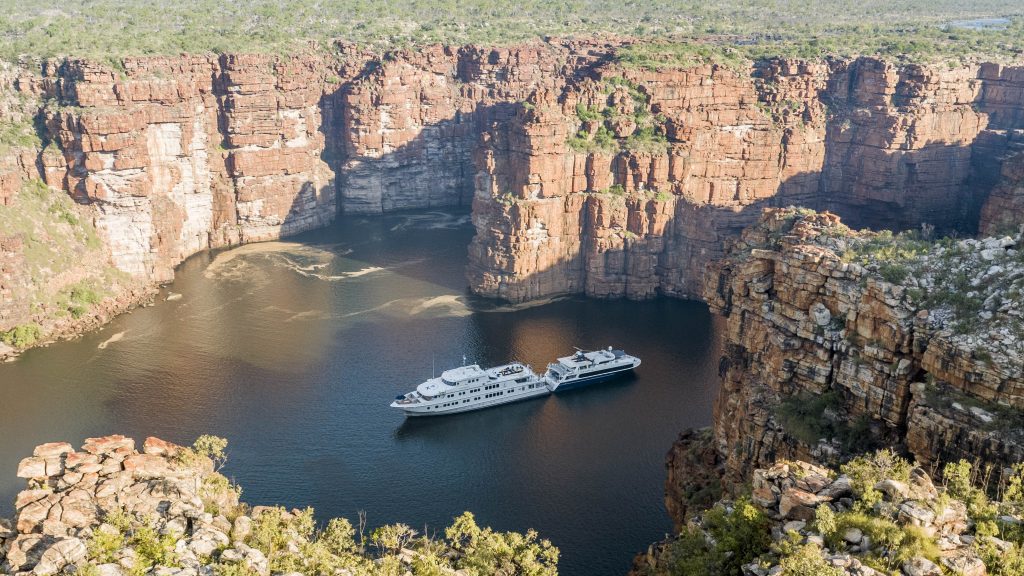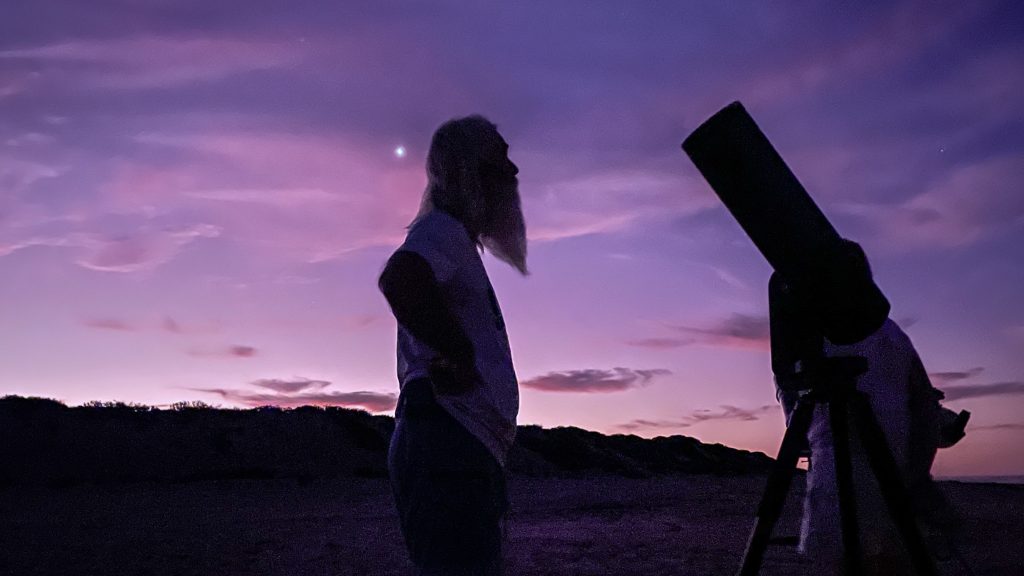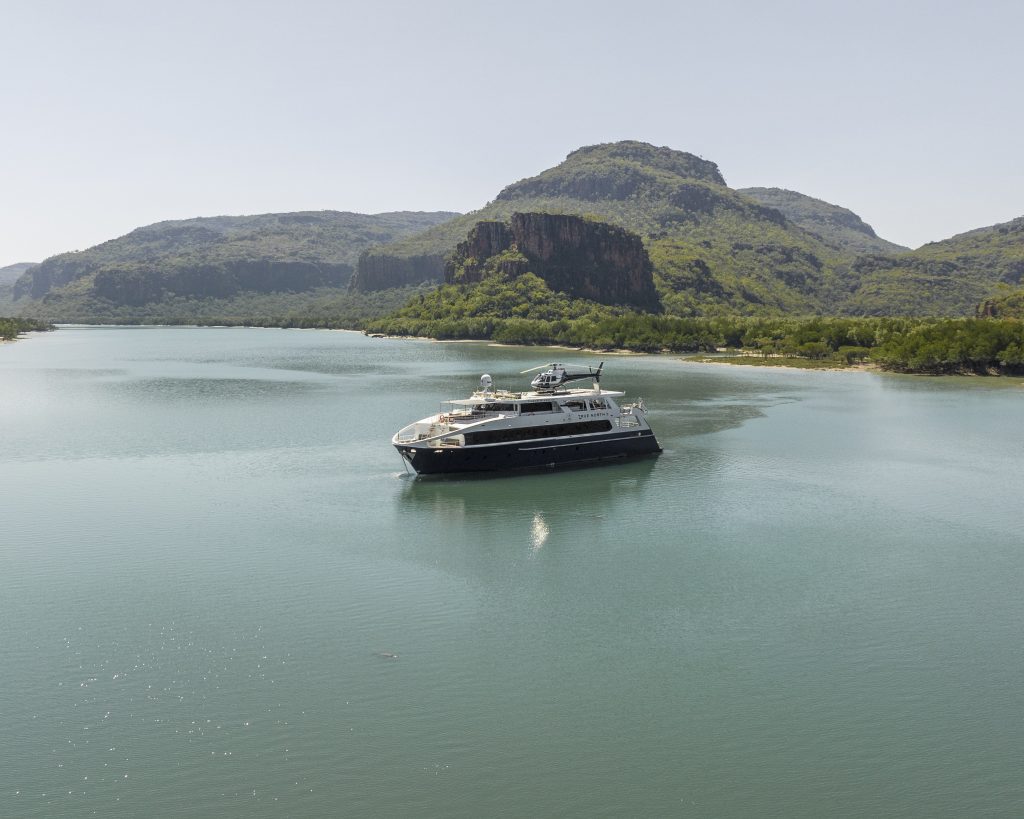The Sepik River is one of the most intriguing adventure destinations on Earth.
It is part of the largest uncontaminated freshwater system in the Asia-Pacific region and a time capsule that is thousands of years old.
It contains not one but two eco-regions identified by the World Wildlife Fund as worthy of special conservation and is home to some of Papua New Guinea’s rarest plants and animals.
More than a dozen of its 76 mammal species are endemic and some of the world’s largest freshwater and saltwater crocodile populations are found there. Conservation work on adjacent crocodile habitat is considered a model for rehabilitation and sustainable harvesting.
Adventurers will be interested to learn there are even piranha-like fish in parts of the river, although they are mainly vegetarian and not native to the area – the result from a failed experiment that’s up there with Australia’s cane toad fiasco.
Art lovers will find the Sepik is home to varied artistic endeavor including wood carving to jewelry making. Every village has its traditions and style and local art has attracted international interest.
The banks of the Sepik have also spawned one of the world’s most infamous cultural ceremonies the infamous crocodile initiation ceremony. An unimaginable ordeal by western standards, yet is the mark of a man and leader among the people of the Sepik.
Sepik River – Helicopter Visit
Sepik River – Expedition Boats
adventure in comfort
There was a time when exploring the Sepik meant trekking and canoeing through lands inhabited by head-hunters, crocodiles, venomous snakes and malarial mosquitoes.
Today the experience is very different aboard the stylish TRUE NORTH complete with alfresco bar, dining room, sports deck and ship’s helicopter.
The 1126 kilometre Sepik is the longest river in Papua New Guinea and the country’s third largest by volume. Most of the river flows through the PNG provinces of Sandaun and East Sepik. A small part flows through the Indonesian province of Papua.
The 10-day Sepik Soiree includes 2 days on the river and provides stark contrast to other parts of the itinerary which feature snorkeling, fishing and beach combing on idyllic tropic islands.
The first European contact came 130 years ago when the German explorer Otto Finsch navigated the 50 kilometres of the Sepik from its mouth in the Bismarck Sea. The Germans mapped the area shortly before the First World War but lost control of the territory in 1918 when the Australian Government established the territory of New Guinea.
Today the local lifestyle remains relatively untouched by the modern world.
Entering the Sepik for some travelers will evoke thoughts of Joseph Conrad’s Heart of Darkness.
However, guests on the TRUE NORTH will find the locals to be a lot friendlier.
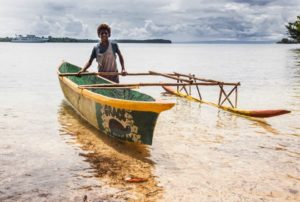
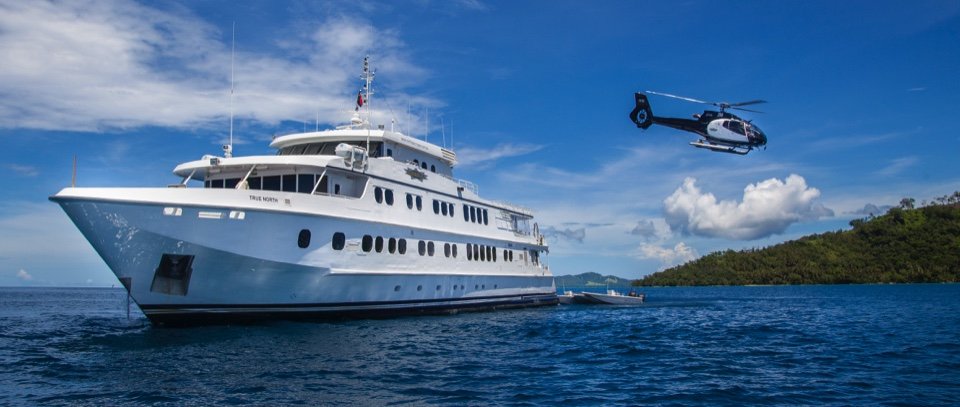
the art
This rarely visited wilderness deep might seem an unlikely inspiration for an exhibition at a national art gallery.
However, the region has long inspired Australian collectors, with an estimated 85,000 pieces of Sepik artwork now housed in collections around the country.
The Australian National Gallery’s Myth and Magic: Art of the Sepik River exhibition contained some 85 works from Australian and PNG collections, some of which had never been seen in public.
The exhibition was a rare opportunity to encounter Sepik masterpieces, works that speak of a time and place when spirits and ancestors were part of daily life.
The isolation of the Sepik’s small tribal groups, including the Arapesh, Iatmul, and Biwat (Mundugumor), from external influences has given rise to one of the most original and extensive artistic traditions in Oceania.
Characterised by the term Sepik River style, the decoration of household and cult objects, weapons, musical instruments, houses and canoes is highly developed.
Each community along the river has its own style and art story. The lore of the Iatmul people, for example, who live along the middle part of the river, tells of a primordial crocodile that swam everything into being. Every time the floods came, it was thought to be the crocodile settling in the waters. Earthquakes were signs that the crocodile was moving.
A feature of Iatmul art is the big slit gong with elaborately carved ends. Even in ordinary houses there are many finely decorated objects, such as carved wooden suspension hooks, neckrests, sago storage jars, cooking pots and eating bowls as well as fire hearths and frying pans.
The carvings are created to be inhabited by spirits and are intended both to help the people meet the challenges of everyday life and to ward off the influences of unfriendly spirits. Many of the carvings are also used in ceremonies and rituals that mark the important stages of life.
Each tribe has its own beliefs and the people recognize spirits, deities, totems and ancestors unique to their clans.
Tribal life centres on the Haus Tambaran, or Spirit House, the most important building in each village. Some of these structures reach 25 metres in height and emerge above the forest canopy. An array of carvings including masks, statues and figures are kept inside the Haus Tambaran. Traditionally only initiated warriors are allowed inside, others enter under penalty of death.
Guides to the region’s art point to more than 20 distinct styles along the Sepik alone with more along its tributaries.
The Chambri Lake villages, for example, are known for their decorative masks, Kamindimbit Village for its bold colourful statues and Tambanum is the biggest carving village on the river.
A centre of pottery-making is the village of Aibom on the edge of the Chambri Lakes.
Traditional jewellery from the region is among the most ornate in Melanesia.
The crocodile plays a big part in the life and therefore the art of the local people. Crocodile sculptures can be life-size or bigger. One, the spirit crocodile figure from the Korewori River, is on loan to the Australian National Gallery and is the length of four people. The gallery collection also includes a ceremonial house post covered in carved designs of crocodile scales. Even a bridal veil continues the crocodile theme.
Sepik masks and sculpture typically use a “hooked,” or “beaked,” style, with an elongation of the nose, and there is also a tradition of modeling faces in clay on human skulls. These arts are most fully developed in the lower reaches of the river and in adjacent areas of the lower Ramu River.
Highlights of the Sepik Soiree include an opportunity to purchase wood carvings market at Angoram in East Sepik province.
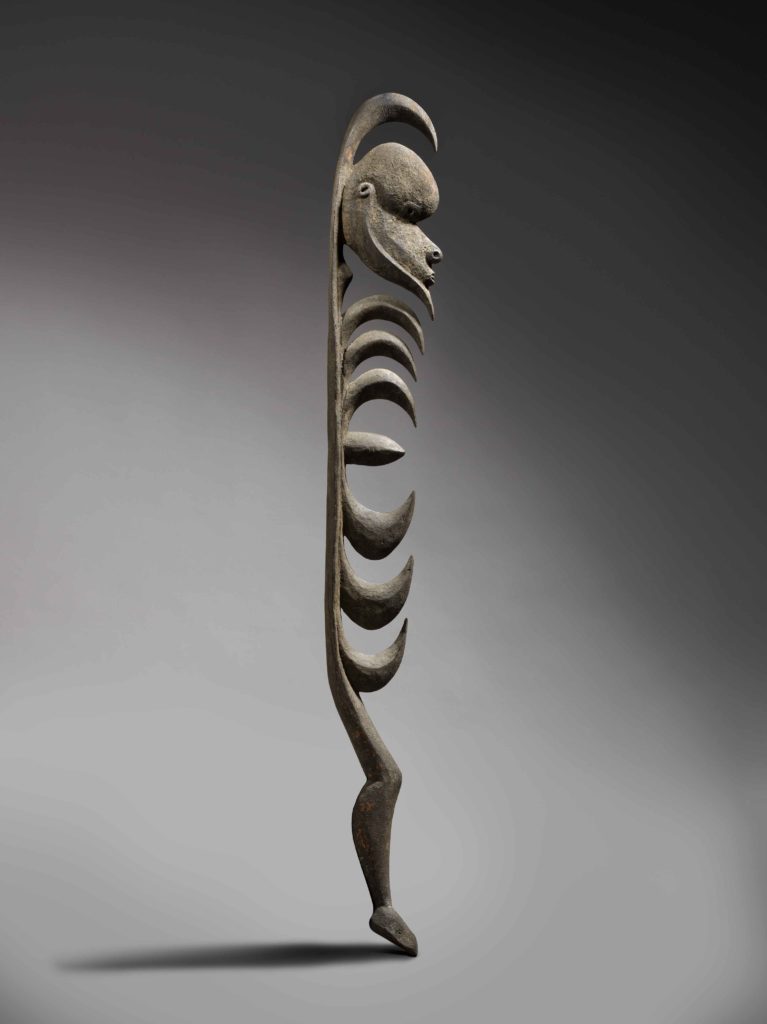
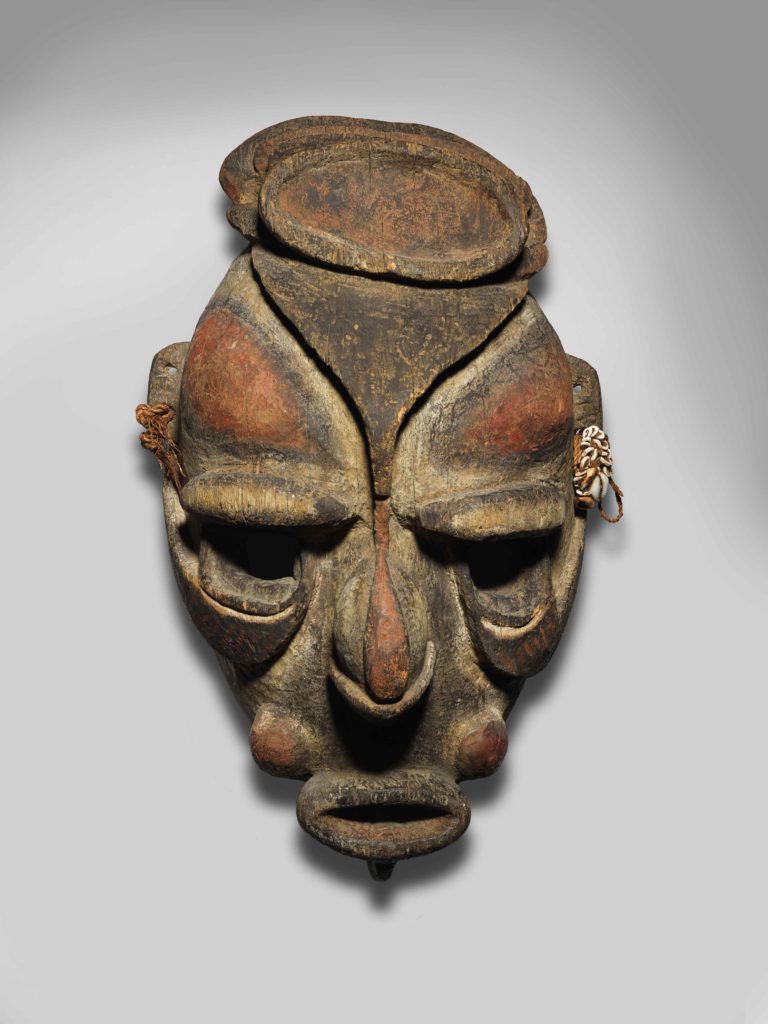
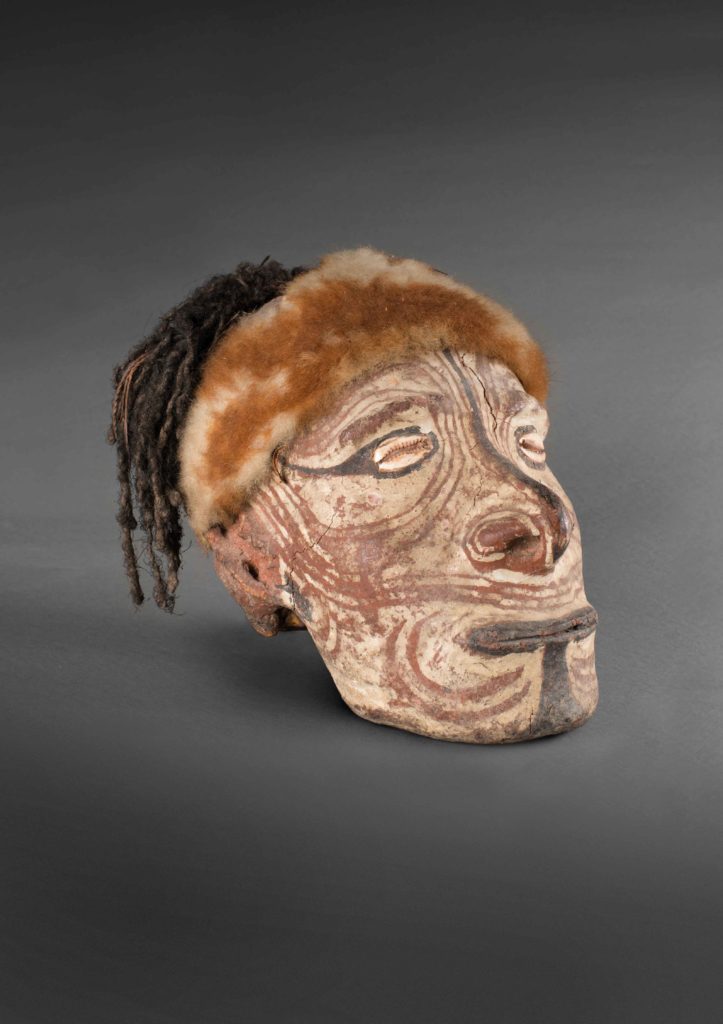
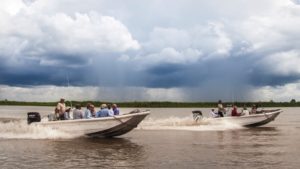
The people and languages
The Sepik River is one of the least developed areas in PNG and home to some 430,000 people who depend almost entirely on the rivers and forests for their livelihoods.
This is perhaps the most linguistically and culturally diverse area on the planet with over 300 languages present in an area the size of France.
One of the largest ethnic groups in the Sepik region is the Iatmul people who live on the middle reaches of the Sepik River. They are a proud group living in villages that have between 200 and 1000 people in each. Their social organization, kinship and religious systems are complex.
The Iatmul people speak one of the Ndu languages. Ndu is the word for “man” in the languages that make up this group.
Abelam is the most populous language, with about 45,000 speakers, though Iatmul is better known to the outside world. There are eight to 12 Ndu languages, depending on how dialects are classified.
In the pre-colonial time the Iatmul were notorious head-hunters and are among the most prolific and accomplished of the region’s woodcarvers.
Another group are the Ngala, known as the Insect Tribe because they specialise in carving images of sago beetles, dragonflies and praying mantis.
The crocodile initiation
The marks on the young man’s chest and back are confronting to western eyes, the result of hundreds of deep razor cuts and hours of excruciating pain.
But to the people of the Sepik these are the mark of a man, a future leader and someone worthy of respect.
True North traveller Andrew Denton (last seen in the Sepik) tells how this ceremony was revived in recent times and of how the result leaves the skin scarred and crocodile-like:
They are held down and their skin cut deep, up to a centimetre, with a razor in the pattern of the crocodile. It can take a whole day to carve one man’s back. Then, after a few days’ break, the front. This is the worst part. The men can’t look away and the carving around the nipples is excruciating.
The skin is then beaten, forcing the blood out; then clay and mud are jammed into the wounds to make them protrude. For the first week or two while the wounds are open, the only salves are stinging hibiscus oil, clay to keep mosquitoes at bay, and betel nut to take away some of the pain.
For two to three months the men stay hidden behind the screen; food is left outside for them by women who hear their screams and think the crocodile is doing its work. Traditionally, this was the start of them becoming men. Their next duty would be to go murder someone and bring their head back to the village. Nowadays, they skip that part.
The process is known as scarification and involves scratching, etching or cutting designs, pictures or words into the skin as a permanent body modification. Scarification is tormenting because men have to bear excruciating pain and lose large amounts of blood. But that is part of the purpose – to signify their transition from boyhood to manhood.
Elders speak of the connection this initiation establishes with the ancient traditions and beliefs. Crocodiles and their markings are carved by artisans on house posts, orator’s stools, totem poles, canoes and wooden plates. To carry the crocodile markings is to draw on the power, strength and fierceness of the crocodile. The markings also represent the crocodile’s other features such as security, protection and connection with the ancestors.
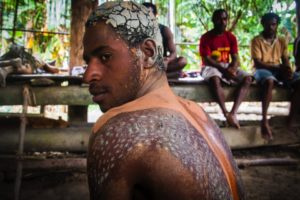
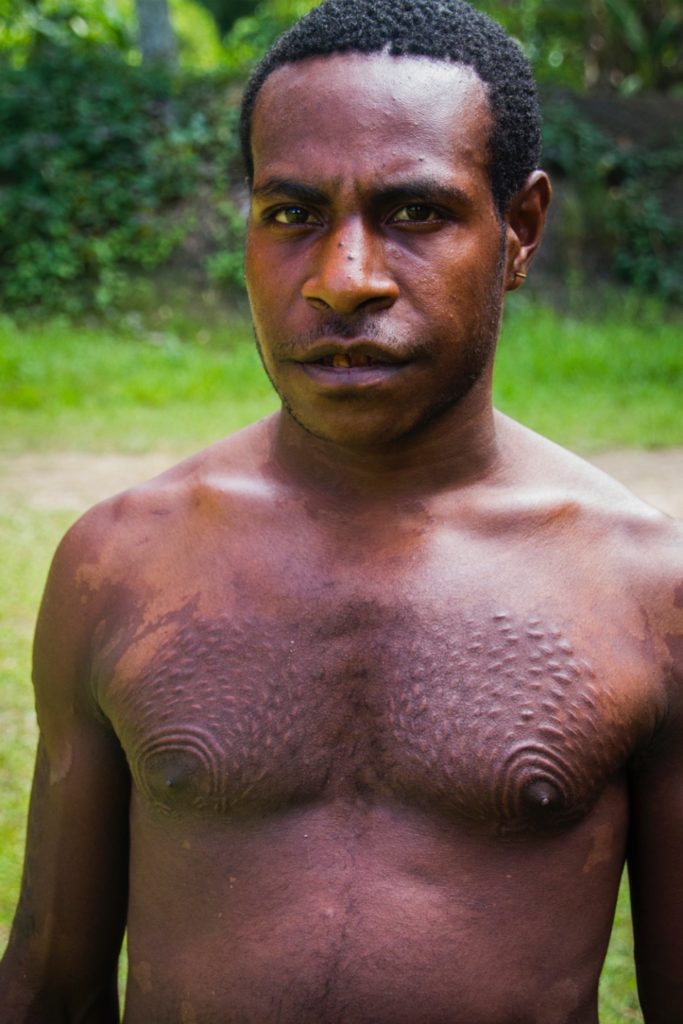
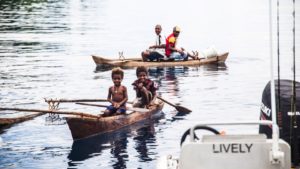
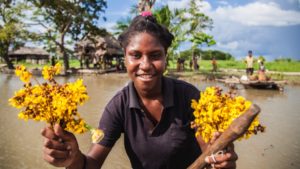
The river
The World Wildlife Fund says the Sepik is part of the largest uncontaminated freshwater system in the Asia-Pacific region and with no large cities or development projects to spoil the river’s waters and wildlife, the area remains largely as it always has been.
The Upper Sepik is home to some of Papua New Guinea’s rarest plants and more than half of the region’s species are endemic – they are found nowhere else on Earth.
Seventy-six species of mammal are known to live in the region, including thirteen species that are endemic or near endemic. The lesser tube-nosed bat and greater sheath-tailed bat are considered vulnerable. The western part of the region is the only known site in PNG for the western ringtail possum.
The United Nations’ Educational, Scientific and Cultural Organisation (UNESCO) reports that the area contains two Global 200 eco-regions (identified by the World Wildlife Fund as priorities for conservation), three endemic bird areas and three centres of plant diversity.
Vegetation types, at altitudes from sea level to 3800 metres, include mangrove forest, herb swamps, tall lowland rainforest, cloud forest, and alpine heaths. The Telefomin region is said to contain the greatest marsupial diversity on the planet. Threatened species such as the New Guinea harpy eagle, Victoria crowned pigeon and the northern cassowary remain common and a number of restricted range birds are present.
The Sepik river fish fauna shares many species with the Ramu and Mamberano rivers. Important waterbird and crocodile populations are supported by the 1500 lakes and other wetlands associated with the basin.
Crocodiles?
Given the cultural significance of this amphibian, it is no surprise that the Sepik is home to some of the world’s largest freshwater and saltwater crocodile populations.
The local people pay homage with a three-day festival every August in the village of Ambunti. The celebrations feature traditional dancing, singing and crocodile craft work. Other practices such as body tattooing and male initiations also take place.
Current estimates on the total populations are difficult to find; in the 1980s one authority said a rough figure was close to 100,000 freshwater crocs and about 20,000 salties. Human harvesting of eggs and hunting have impacted on numbers but the Sepik Wetlands Management Initiative has achieved significant habitat protection.
The initiative included a program in which crocodile egg collectors who followed conservation guidelines received a guaranteed return from a commercial crocodile egg retailer. The combination of egg collection and crocodile farming doubled the annual income of participating communities, all while raising the awareness of wetland values and stressing the cultural importance of crocodiles.
The New Guinea freshwater crocodile is abundant in the Sepik area and although considered small by saltwater standards, males can still reach 3.5 metres.
Did someone mention piranha?
Well they’re not actually piranha but a related species known as pacu. They have human-like teeth rather than the razor edged arrays of piranha and technically favour vegetation over flesh.
Pacu, which are native to South America, were introduced in the 1990s in a misguided attempt to provide a new food source following the overfishing of native species.
Some locals blame the fish for outcompeting with local species and for attacking juvenile crocs.
The most contentious claim is that they are responsible for attacks on humans, especially for biting what Jeremy Clarkson would refer to as a gentleman’s sausage.
